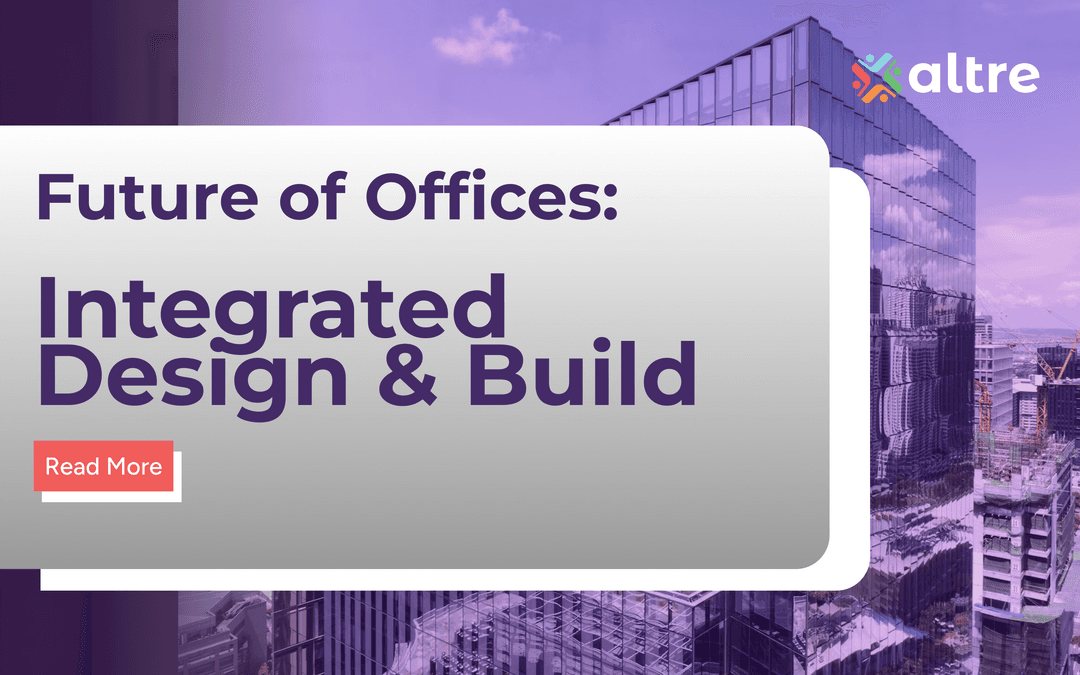
The modern office is undergoing a quiet revolution. Sterile, cookie-cutter workspaces are being replaced by agile, sustainable, and tech-enabled environments that reflect hybrid work models and evolving team needs. Yet, while companies want future-ready workplaces, most still rely on outdated project delivery methods that cannot keep pace.
Design & Build (D&B) is changing that equation. An integrated approach where one team handles everything from planning and design to costing and execution, D&B is redefining how offices are delivered in India.
What is Design & Build?
Unlike traditional methods where clients hire architects first and then bid out construction, Design & Build integrates both functions from day one. This alignment removes the friction between design intent and construction reality, creating a seamless process that saves time, cuts errors, and sets a single line of accountability.
The Problem with Traditional Office Delivery Models
Modern offices demand custom layouts, collaborative zones, sustainability features, and advanced technology integration. With hybrid work reshaping demand, flexibility is critical. Traditional models fall short:
- Design-Bid-Build: The Linear Trap
A sequential process where architects design first, then contractors bid. It often leads to extended timelines, budget escalations when bids exceed estimates, and adversarial blame games between designers and contractors. - Shell Lease + Tenant Fit-Out: The Coordination Nightmare
Landlords deliver a basic shell while tenants separately manage design and interiors. Price shocks appear late, rework becomes expensive, and coordination gaps between landlord services and tenant fit-outs delay delivery. - Landlord Turnkey Fit-Out: Limited and Opaque
Ready-to-move-in spaces may seem convenient, but customization is minimal. Costs get bundled into rent with little transparency, and future layout changes can be prohibitively expensive. - Construction Management: Too Many Moving Parts
A manager is appointed early but clients still hold multiple contracts. Costs and schedule risks remain with the occupier, while accountability stays diffuse. - Unorganized Local Contractors: The Wild West
Still the dominant choice for many Indian occupiers, but with inconsistent quality, lack of structured warranties, poor ESG adherence, and little to no transparency.
Why Design & Build Delivers Better Outcomes
20–30% Faster Timelines
Integration removes duplication, redesigns, and tendering delays. According to McKinsey's Reinventing Construction report, Design & Build can save 20–30% of project time compared to traditional methods.
Cost Certainty and Fewer Overruns
Early contractor involvement allows real-time budgeting and value engineering. Research from the World Bank shows that integrated procurement models reduce cost overruns by addressing risks earlier in the process.
Strategic Material Procurement
With design and execution locked together, procurement begins earlier. This shields projects from inflation and supply disruptions, a crucial edge in volatile markets.
Single Point of Accountability
No more finger-pointing between architects and contractors. The Design-Build Institute of America notes that single-source responsibility streamlines decisions and reduces disputes.
ESG Integration Built-In
Green-certified fit-outs cost only 3–5% more upfront but reduce lifecycle operating costs by 20–30%. For occupiers targeting ESG goals, India's Green Building Council highlights how integrated design improves sustainability from the start.
Boosted Employee Productivity
Workspaces with daylighting, acoustics, and indoor air quality improvements can increase productivity by 6–11% and cut absenteeism. Harvard T.H. Chan School of Public Health research links office air quality to cognitive performance, reinforcing that thoughtful design is a business imperative.
The Future is Integrated
As India's office market expands, fragmented project delivery is becoming a liability. Occupiers need faster turnarounds, tighter cost control, and spaces that align with both ESG targets and employee expectations.
Design & Build offers exactly that: better spaces, faster delivery, cost certainty, and accountability under one roof. The question is no longer whether Design & Build will become the standard for office spaces. The question is how quickly forward-looking occupiers will embrace it.


